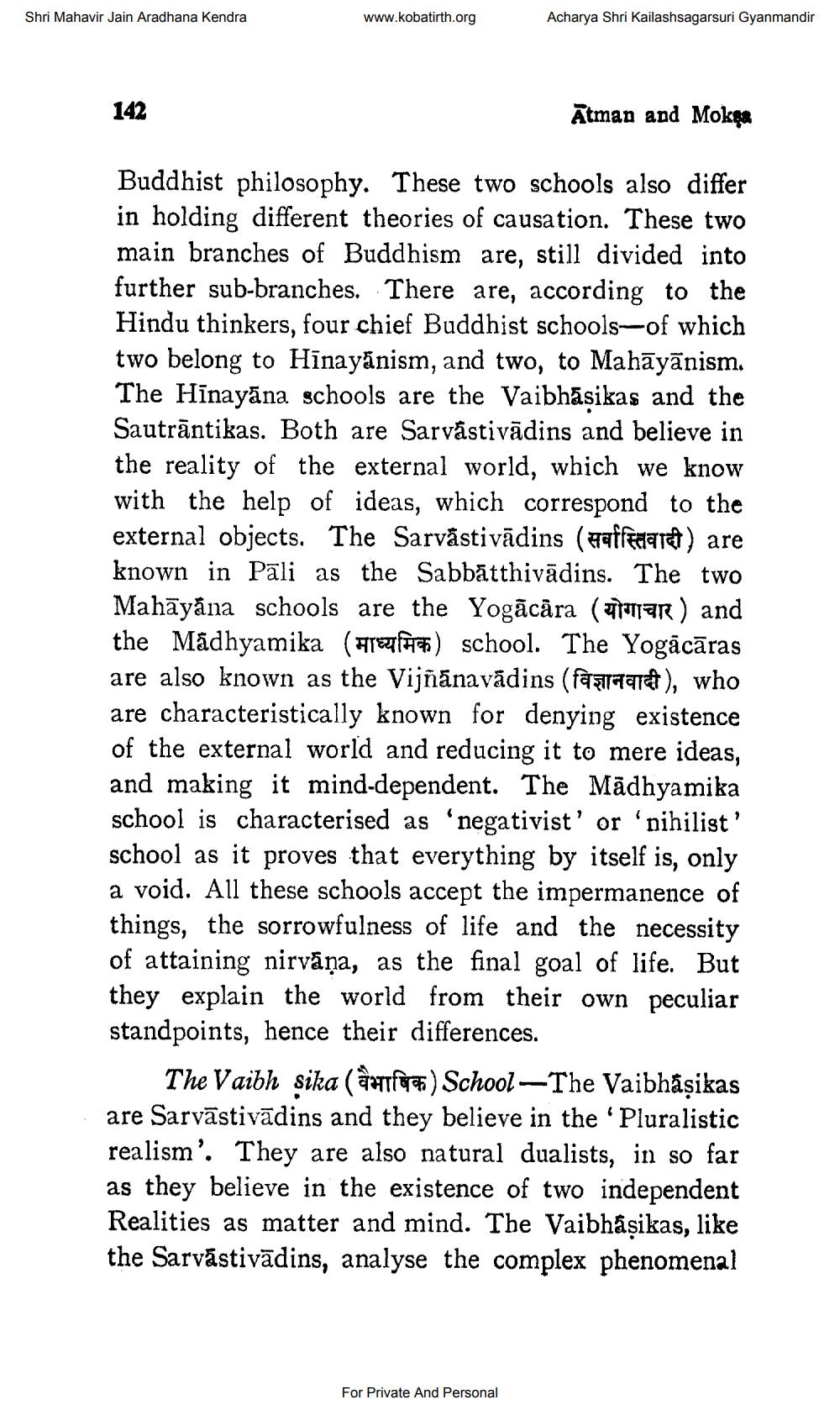________________
Shri Mahavir Jain Aradhana Kendra
www.kobatirth.org
Acharya Shri Kailashsagarsuri Gyanmandir
142
Atman and Moka
Buddhist philosophy. These two schools also differ in holding different theories of causation. These two main branches of Buddhism are, still divided into further sub-branches. There are, according to the Hindu thinkers, four chief Buddhist schools of which two belong to Hinayānism, and two, to Mahāyānism. The Hīnayāna schools are the Vaibhāsikas and the Sautrāntikas. Both are Sarvástivādins and believe in the reality of the external world, which we know with the help of ideas, which correspond to the external objects. The Sarvāstivādins (Haffinata) are known in Pāli as the Sabbātthivādins. The two Mahāyāna schools are the Yogācāra (mar) and the Madhyamika (pred ) school. The Yogācāras are also known as the Vijñāna vādins (faardt), who are characteristically known for denying existence of the external world and reducing it to mere ideas, and making it mind-dependent. The Mādhyamika school is characterised as 'negativist' or 'nihilist' school as it proves that everything by itself is, only a void. All these schools accept the impermanence of things, the sorrowfulness of life and the necessity of attaining nirvāṇa, as the final goal of life. But they explain the world from their own peculiar standpoints, hence their differences.
The Vaibh sika (astfe) School — The Vaibhāşikas are Sarvāstivādins and they believe in the 'Pluralistic realism'. They are also natural dualists, in so far as they believe in the existence of two independent Realities as matter and mind. The Vaibhäşikas, like the Sarvástivādins, analyse the complex phenomenal
For Private And Personal




